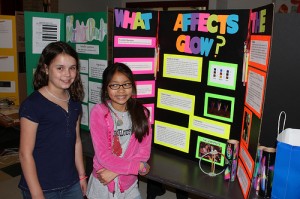
I saw an article from National Geographic entitled “How much do you really know about science?” The article contains a quiz to test your science knowledge. However, the author of this article makes a typically fatal mistake: mistaking facts about the natural world obtained through the scientific process with the process of science itself. Science is a process that leads to a collection of facts, but it is not the facts themselves. You can read the article and take the quiz yourself here: http://newswatch.nationalgeographic.com/2013/06/20/how-much-do-you-really-know-about-science/. The author of this article is mistaking rote memorization for science.
I thought it would be much more interesting to, instead, offer up a quiz on actual science and see how people fared. Post your responses in the comments section. I’ll post the answers later.
Test your knowledge of science!
- What is a “theory”?
- Any opinion about the cause of a phenomenon, which may or may not be testable, and whose reliability is not required.
- An explanation about the cause of a phenomenon that has been tested and whose reliability has been assessed using a single test.
- An explanation about the cause of a phenomenon that may or may not have yet been tested, and whose reliability is not required.
- An explanation about the cause of a phenomenon that has been tested and whose reliability has been assessed using multiple tests.
- Which of these is a scientific explanation of the diversity of biological systems?
- Natural Selection, which holds that life on earth developed to its present state over a long period of time thanks to pressure from the surrounding environment.
- Abrahamic Creationism, which holds that life on earth was created in its present form over just a few days by an omnipotent and universal god.
- Intelligent Design, which holds that life on earth may have largely developed slowly over a long period of time, but certain organisms are too complex and only explainable by intervention of an intelligent agent.
- All of the above
- A lightbulb is attached to a circuit, containing a battery (source of power) and a switch( which can interrupt the circuit and cause the light to go off). The switch is flipped to connect it to the battery, and the lightbulb does not light. Which of these is a “construct”?
- There is a problem with the battery (it might not be charged)
- There is a problem with the switch (it might be broken and never close the circuit)
- There is a problem with the lightbulb (it might be burned out or damaged in some other way)
- Invisible fairies who are shy and undetectable are eating the light from the lightbulb before it can reach my eyes.
- Which of these is not a stage in the scientific method?
- Observation of a phenomenon
- Formulation of an hypothesis to explain a phenomenon
- Asking your supervisor if the idea is good or bad
- Proposition of an experiment to test an hypothesis
- Your friend claims that he has built a device that can detect platinum at a depth of up to 50 feet. Which of these is a reasonable experiment to test the claim?
- Dig ten 50-foot holes, place a platinum ring in one of them, and cover all the holes with buckets so that your friend cannot see the platinum. Ask him to detect which hole the platinum is in. Repeat this at least a few times. Make sure the person recording the tests is not the person who placed the platinum.
- Get 10 buckets and arrange them uniformly. Place a platinum ring under one of them so that your friend cannot see the platinum. Ask him to detect which bucket the platinum is under. Repeat this at least a few times. Make sure the person recording the tests is not the person who placed the platinum.
- Get 10 buckets and arrange them uniformly. Place a pound of platinum under one of them so that your friend cannot see the platinum. Ask him to detect which bucket the platinum is under. Repeat this at least a few times. Make sure the person recording the tests is not the person who placed the platinum.
- Get 10 buckets and arrange them uniformly. Place a platinum ring under one of them so that your friend cannot see the platinum. Ask him to detect which bucket the platinum is under. Repeat this at least a few times. Make sure the you are with him the whole time when he conducts his search.

